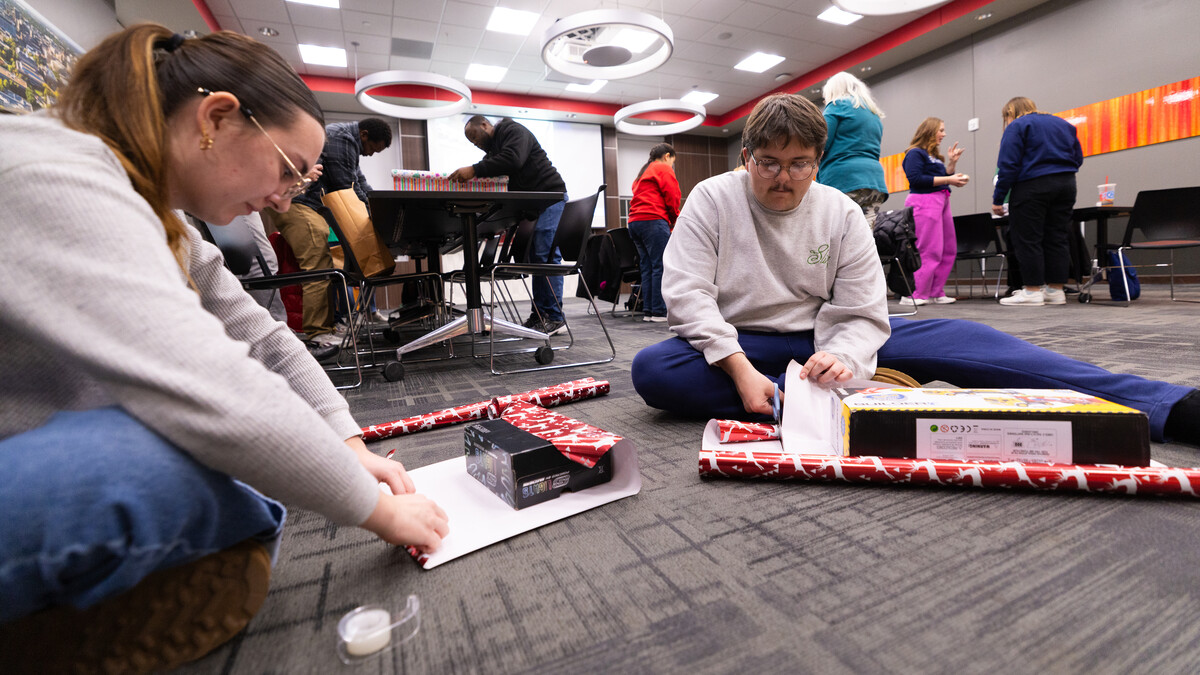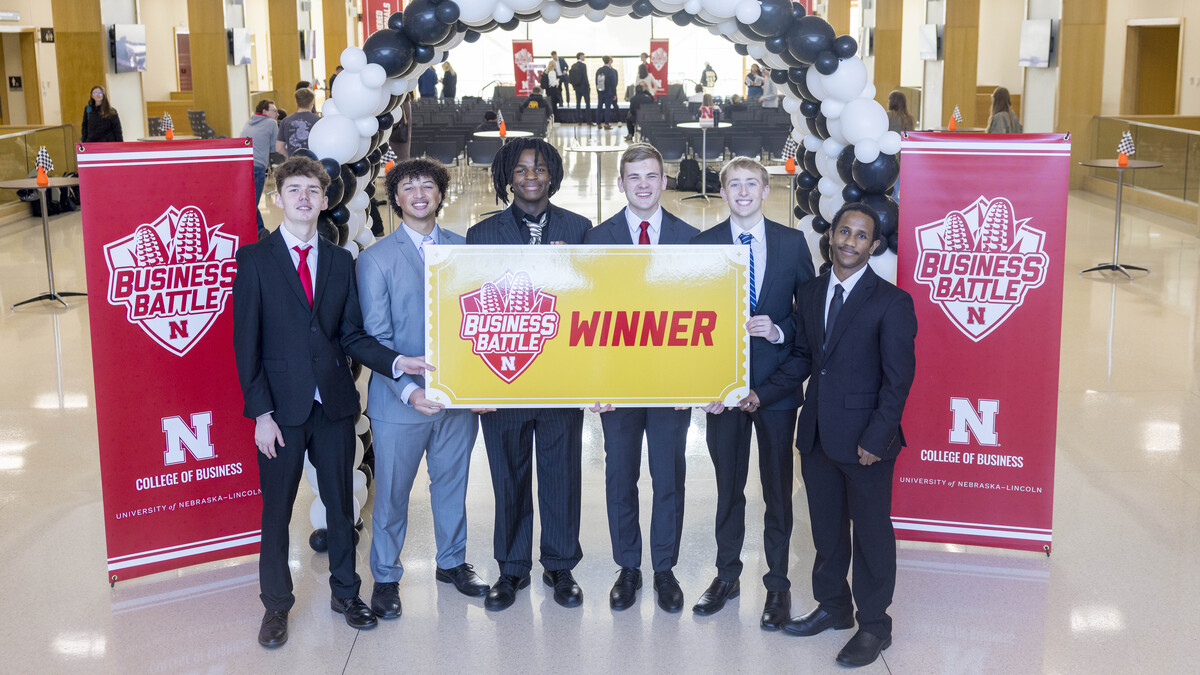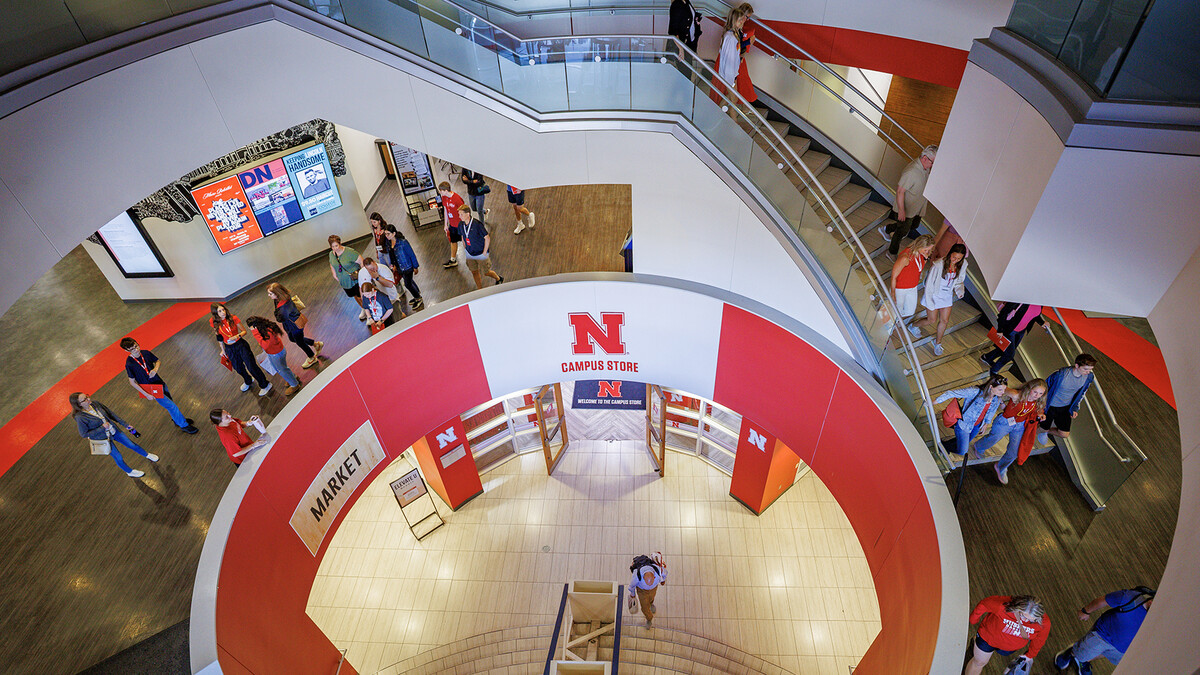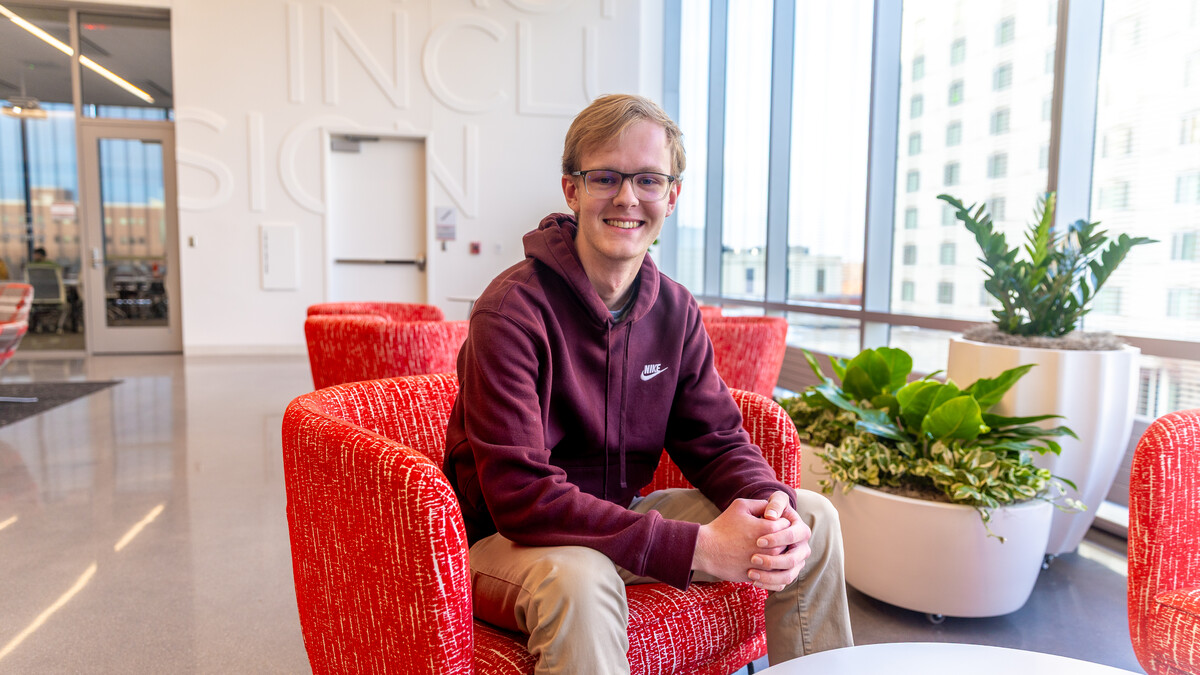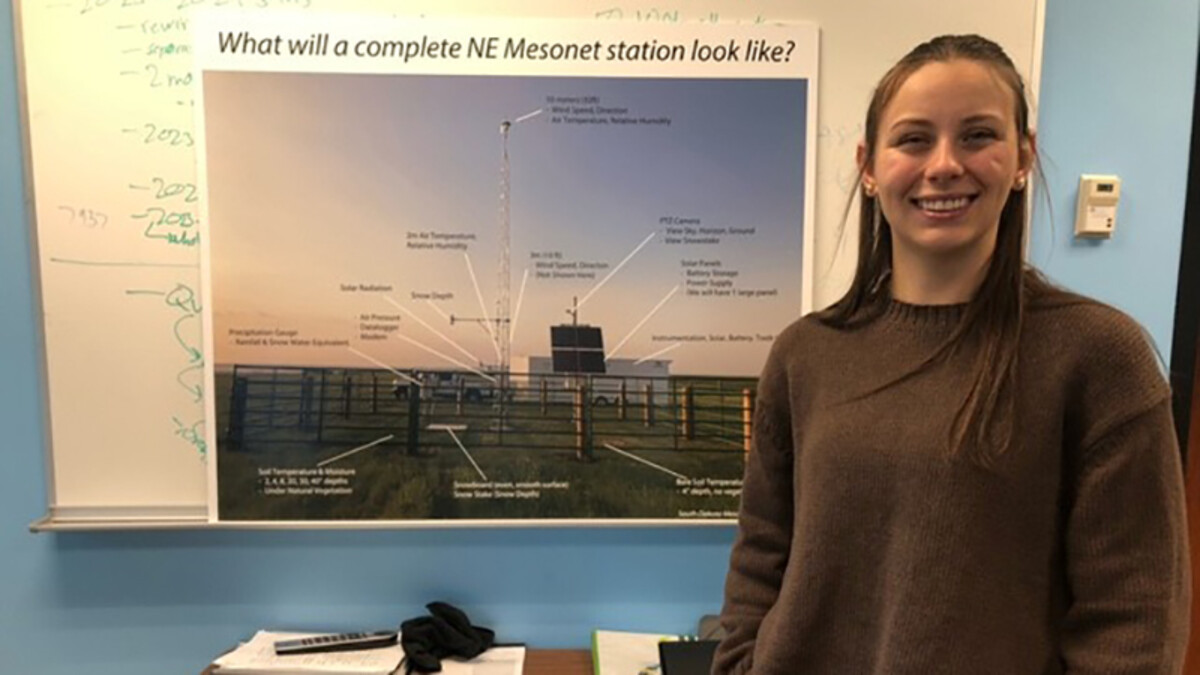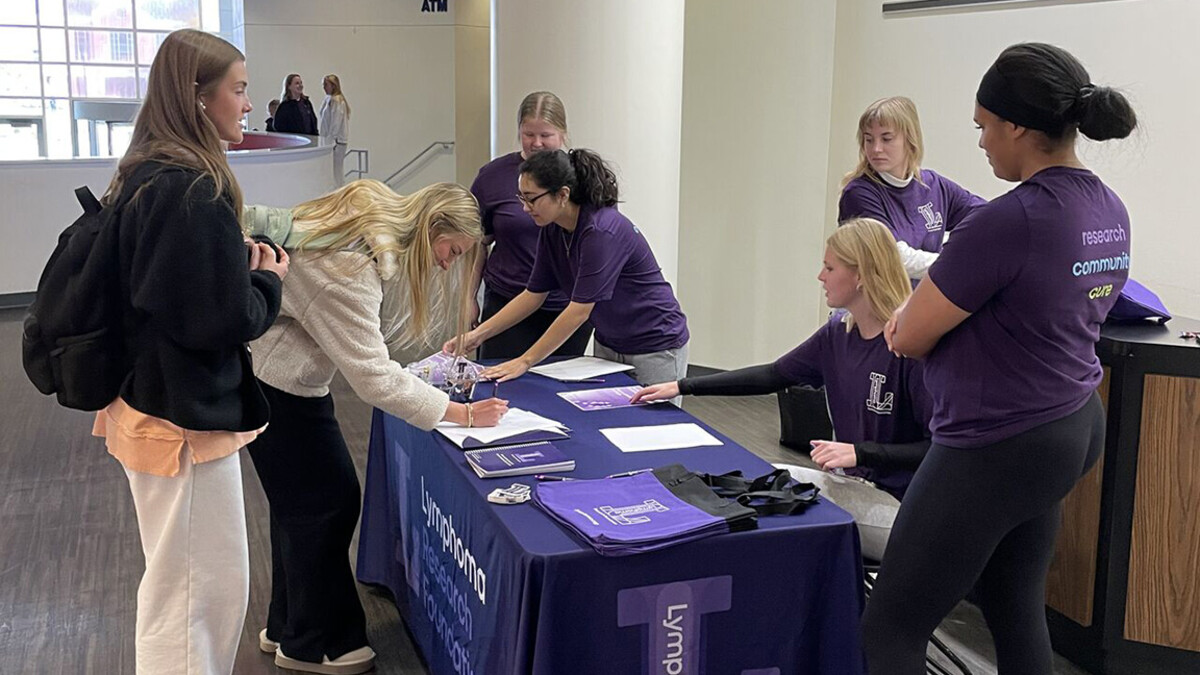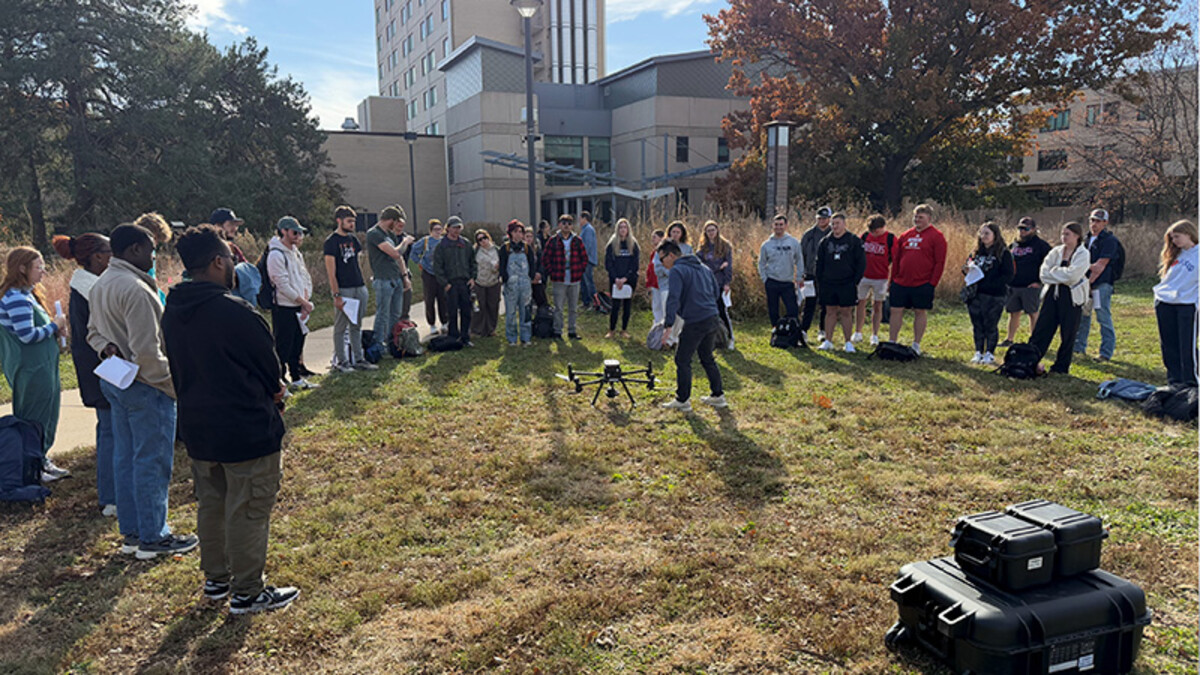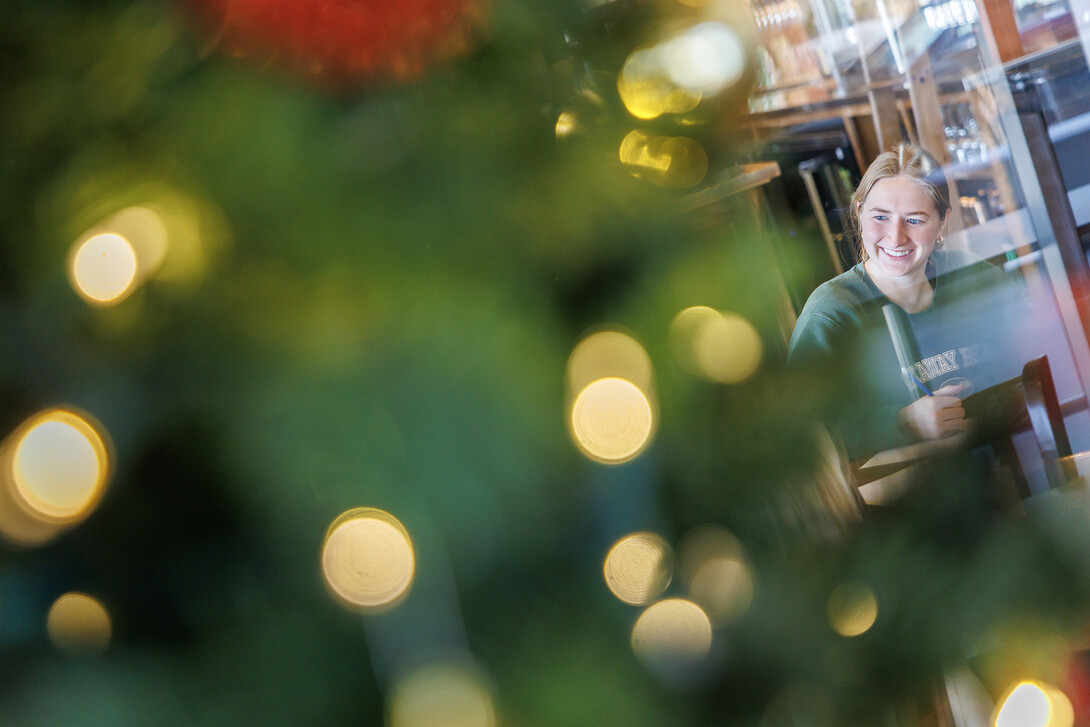
The University of Nebraska–Lincoln continued to shine in 2024, carrying out its mission of teaching, research and outreach, and the efforts of the campus community earned recognition and accolades.

Nebraska reached new heights in research and scholarly activity and achieved goals in increasing enrollment, offering experiential learning opportunities for students and outreach to the state.
Here, Nebraska Today takes a look back at 2024 — a year of impactful work.
Campus life
The university is still among the best places to work, according to Forbes. The Forbes ranking of America’s Best Large Employers ranked the university at No. 2 in the state and No. 154 nationally.
Spring brought an opportunity for the campus community to have fun under the (blocked) sun. Hundreds of Huskers gathered to take in the solar eclipse April 8. The experiences were told through video, social posts and photos.
In the fall, campus welcomed its largest freshman class since 2017 and celebrated an enrollment increase of 1.7%. The fall census recorded 19,305 undergraduate students, an increase of 1.8%, and 4,064 graduate students, an increase of 1.3%.
Experiential learning opportunities continued to grow, as well. In an effort to meet its N2025 goal that every student have an experiential learning opportunity, the university’s colleges aligned with the Office of the Executive Vice Chancellor to track and expand the opportunities provided. More than a third of the class of 2026 has already completed a hands-on offering.
Some highlights of experiential learning include:
- Students presented their research to state lawmakers in April. The presentations highlighted the many successes of undergraduate research programs on campus.
- Members of the Air Force ROTC continued the tradition of organizing and directing the vaunted flyovers before Husker football games in Memorial Stadium. The work attracted media attention that highlighted the many hours of dedication by these students.
- Fourth-year students in the College of Architecture, led by faculty Nate Bicak and Steve Hardy, worked with Kimball residents and leaders to create a sustainability plan and design concepts for the town’s impending growth.
- Students from the SMART-Lab, KRNU-FM, Nebraska Nightly, Nebraska News Service and Production House of the College of Journalism and Mass Communications' Experience Lab offered in-depth updates during the 2024 presidential election.
Research, innovation and creative activity
Nebraska’s research efforts were out of this world — literally — in 2024.
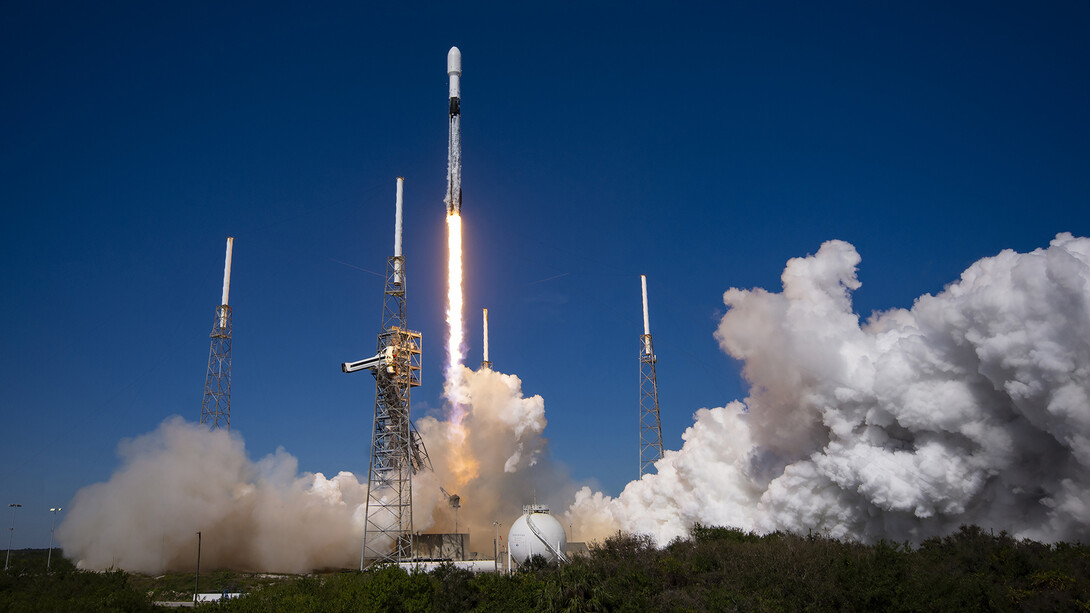
In January, Shane Farritor launched his surgical robot to the International Space Station and completed a successful test of the robot in space. The mission identified the next steps for creating surgical technologies suitable for long-distance space travel, but it also had implications for health care here on Earth. Research from the University of Washington showed that availability of surgeons in rural areas declined by more than 29% between 2001 and 2019.
“Remote surgery has the potential to address these issues so patients can get the health care they need,” Farritor said.
On the ground, Nebraska researchers at the Midwest Road Safety Facility made headlines for roadway safety research in relation to the burgeoning number of electric vehicles. EVs are heavier, due to their batteries and other components, and researchers are continuously testing current roadside barriers to learn how they can be improved. Transportation officials, defense experts and Midwest Roadside Safety Facility researchers will collaborate to determine next steps to accommodate the anticipated changes in America’s vehicle fleet.
Luke Farritor, a senior in the Jeffrey S. Raikes School of Computer Science and Management, was named co-winner of the $700,000 Vesuvius Challenge. Farritor was named as a finalist for the prize in November 2023 after decoding a word from a 2,000-year-old burnt scroll recovered from Roman town of Herculaneum, where the eruption of Mount Vesuvius in A.D. 79 buried the surrounding area in ash and volcanic mud. To win the grand prize, Farritor and two others were able to complete a Herculean feat — deciphering 15 passages of text from the scrolls.
Speaking of ancient texts, Peter Revesz, an expert in computation linguistics and professor in the School of Computing, made a global splash when he was able to translate 20 mysterious characters inscribed on a sphinx statue from the Roman Empire. Revesz leaned on his experience using databases to compare and identify alphabet symbols and languages to decipher the text.
Additonally, 180 Husker faculty were included in the Stanford/Elsevier Top 2% Scientists List, a comprehensive analysis of peer-reviewed papers across scientific disciplines that measures the significance of research.
Other notable endeavors and achievements include:
- A unique concert experience was offered by Paul Barnes, Marguerite Scribante Professor of Piano, when he performed inside the iconic “Greenpoint” sculpture on campus for Lincoln Calling. The May performance also honored Richard Serra, the sculptor, who died March 26.
- A team led by Rebecca Roston, Raikes Chair of Plant Sciences and associate professor of biochemistry, received a $1.8 million National Science Foundation grant to pursue strategies for enhancing the cold tolerance of sorghum.
- Nirupam Aich, associate professor of civil and environmental engineering, published articles and earned additional funding to investigate how to degrade and destroy per- and polyfluoroalkyl substances — known as “forever chemicals” — to remove cancer-causing agents from the environment.
- The university set a record for NSF Faculty Early Career Development Program awards — also known as CAREER awards — with nine Husker researchers earning the recognition. This brought $6.2 million in funding to their collective research efforts.
- Susan Sheridan became the first Husker elected to the National Academy of Education. The George Holmes University Professor of educational psychology is the founding director of the Nebraska Center for Research on Children, Youth, Families and Schools, which celebrated its 20th anniversary in 2024.
- David Berkowitz, Willa Cather Professor of chemistry, was the first Husker named a fellow of the American Chemical Society.
- Rick Bevins, Mildred Francis Thompson University Professor of psychology; and Thomas Powers, professor of plant pathology, were selected as fellows of the American Association for the Advancement of Science.
- Thomas C. Gannon, associate professor of English, earned the Stubbendieck Great Plains Distinguished Book Prize for his book “Birding While Indian: A Mixed-Blood Memoir.”
- Students and faculty from the University of Nebraska College of Law played a leading role in developing a newly published manual for military interactions in space. The Woomera Manual on the International Law of Military Space Activities and Operations was published earlier this year by Oxford University Press. Jack Beard, associate professor of law and director of Nebraska Law’s Space, Cyber and National Security Law program, helped guide the development of the manual with a team of space and military law experts in the United States, Australia and United Kingdom.
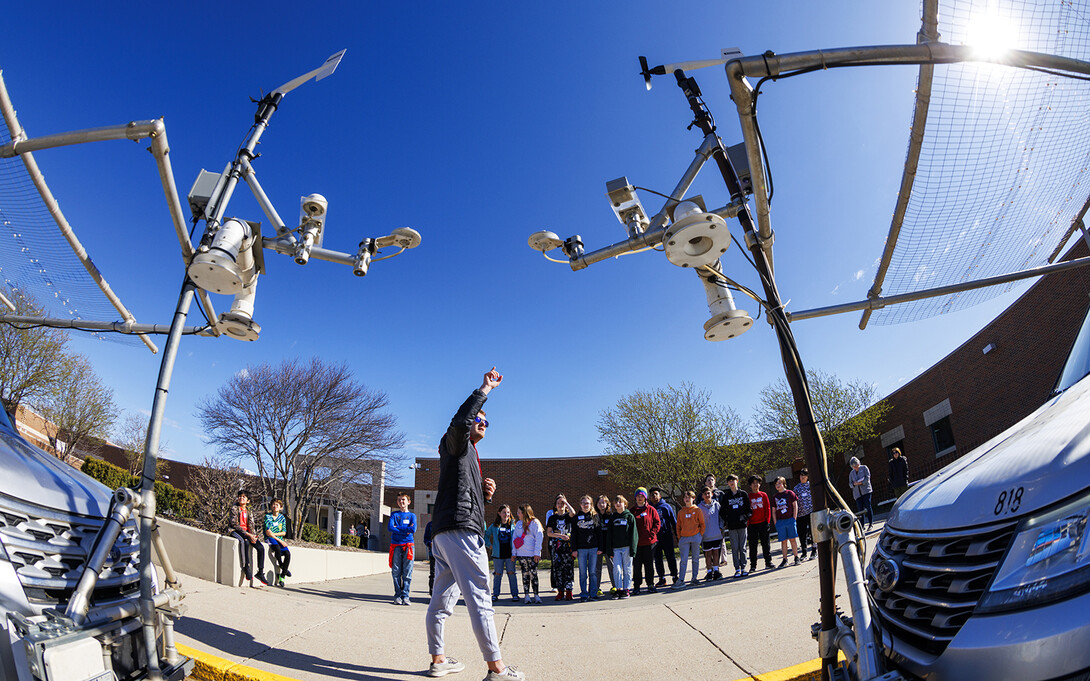
Impact and outreach
The university began the year earning the community engagement classification from the Carnegie Foundation, which recognizes institutions’ exceptional commitment to community engagement.
The classification from Carnegie is a culmination of the impact the state’s land-grant university has had on all Nebraskans over its 155-year history. Those efforts continued in 2024, with initiatives including:
- Nebraska Innovation Studio is catalyzing Nebraska’s robotics ecosystem by offering training for programming and operation of collaborative and welding robots.
- Meteorology graduate students visited middle schools during Severe Weather Awareness Week in March, teaching students about how meteorologists track storms and offering an up-close look at the vehicles used to study storms.
- Rural Prosperity Nebraska helped Thayer County officials bring broadband internet to residents.
- Community and regional planning experts in the College of Architecture used $1 million in funding to help 31 communities in eastern Nebraska who have been hit hard in the past by flooding mitigate risks and plan for future flooding events.
- A team in IANR and the Native American Coalition launched the Turtle Island Trade Coalition website, which provides support and resources for Indigenous food producers to help grow their customer base and the reach of their businesses.
- The College of Education and Human Sciences expanded its teacher apprenticeship program with Lincoln Public Schools and created new partnerships to benefit 15 schools.
Aside from the many outreach efforts, UNL also directly impacted the Nebraska economy, contributing $3.06 billion, and it continues to cultivate the next generation of entrepreneurs and faculty startups.
Nebraska debuted at No. 42 in the world and No. 12 in the Midwest in The Princeton Review and Entrepreneur Top 50 Undergraduate Entrepreneurship Programs rankings. The National Academy of Inventors ranked the NU system at 73rd worldwide after earning 46 U.S. utility patents in 2023. Nebraska was No. 79 in 2022 and has now been included in the top 100 list for seven consecutive years.
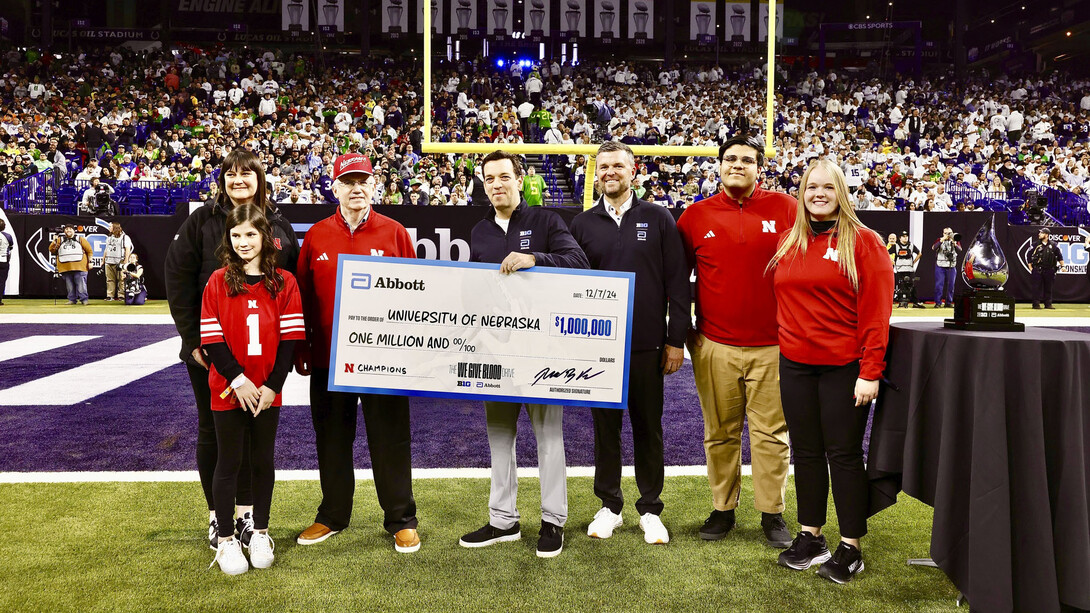
Capping off a year of impact, Nebraska won the Big Ten Conference and Abbott’s “We Give Blood Drive” competition. Nebraskans donated more than 3,900 pints of blood. The $1 million prize will be used to advance student and community health at the university.
Changing scenery
Huskers returned to campus in January to the grand opening of Kiewit Hall. The new Nebraska Engineering building opened its doors Jan. 22. The six-story, privately funded building welcomed students, faculty and staff for academic pursuits, meetings and studying, and many took advantage.
Following a five-month renovation to improve accessibility and better protect its exhibits and research specimens, the University of Nebraska State Museum reopened its doors in March. The $9.3 million renovation was the largest project in its 97-year history. The museum also opened a permanent exhibition, the “National Geographic Photo Ark,” which consists of Nebraska native Joel Sartore’s photographic work to document every species living in the world’s zoos, aquariums and wildlife sanctuaries.
Construction began in the summer on the academic spaces for the Hospitality, Restaurant and Tourism Management program inside the Scarlet Hotel on Nebraska Innovation Campus. It is expected that the work will be completed in time for fall 2025 classes.

An August groundbreaking commenced the construction of NFarms, the university’s precision agriculture initiative. NFarms will occupy land near the Eastern Nebraska Research, Extension and Education Center at Mead, Nebraska.
HDR Pavilion, the second part of a two-phase renovation project of Architecture Hall, opened in the fall. The addition includes the expansion and renovation of an existing lecture hall, plus 14 new studio spaces, adjoining classrooms, and indoor and outdoor collaboration spaces for students, instructors and industry partners.
And construction continues on the Westbrook Music Building, which is expected to open in 2025.
Happy trails
A number longtime leaders chose 2024 as the year to pursue new interests through retirement:
- Sherri Jones announced in October that she would step down as interim vice chancellor for research and transition to retirement. Jennifer Nelson was tapped to step into the role as a search is underway to fill the position permanently.
- Katherine Ankerson, executive vice chancellor, announced in November that she would retire at the end of the year. Mark Button, dean of the College of Arts and Sciences, was tapped as interim executive vice chancellor.
- Craig Chandler, director of photography in University Communication and Marketing, photographed his 71st commencement Dec. 21 and retired. Chandler worked for UCOMM for 16-plus years, memorably capturing many moments of campus life.
- Parks Coble, James L. Sellers Professor of history, retired after a 48-year career in the university’s classrooms.
- And after 32 years as an educator and advocate, Pat Tetreault, director of the Gender and Sexuality Center, announced her retirement in December.
In memoriam
The university community said goodbye to three titans of support. Bill Scott, one of the most transformative donors in the history of the university, died Feb. 27. Paul Engler, whose leadership and funding propelled the founding of the Engler Agribusiness Entrepreneurship Program, died May 3. And Howard Hawks, regent emeritus and namesake of Hawks Hall, died Dec. 6.
Campus also mourned faculty including Gerry Finnegan, Colleen Jones and Dan Franklin Howard.
